Shotgun Shell Types Explained: Instantly Know Which Is Best For You
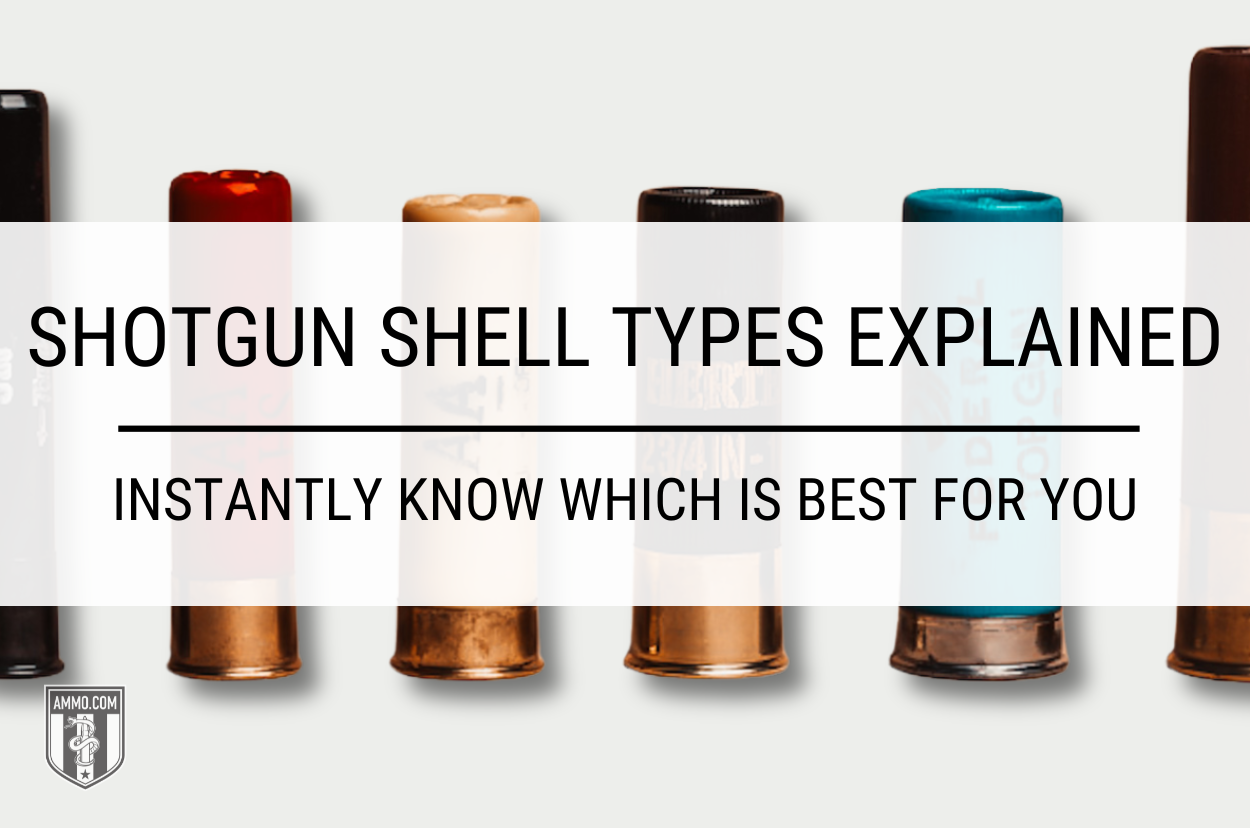
Shotgun Shell Types: Birdshot vs. Buckshot vs. Slugs
Understanding the difference between birdshot, buckshot, and slugs is the first step in becoming a Jedi Master of choosing the perfect shotshell for your next outing, whether that’s shooting skeet, hunting waterfowl, or dropping a big buck.
Birdshot
Birdshot sizes range from #12 (0.05”) to FF (0.23”) in diameter. Birdshot covers various shooting and hunting activities, including small game hunting (rabbit, squirrel, and fowl) and skeet shooting. The smaller pellets strike their target in thicker formation (compared to buckshot), which makes hitting small targets easier.
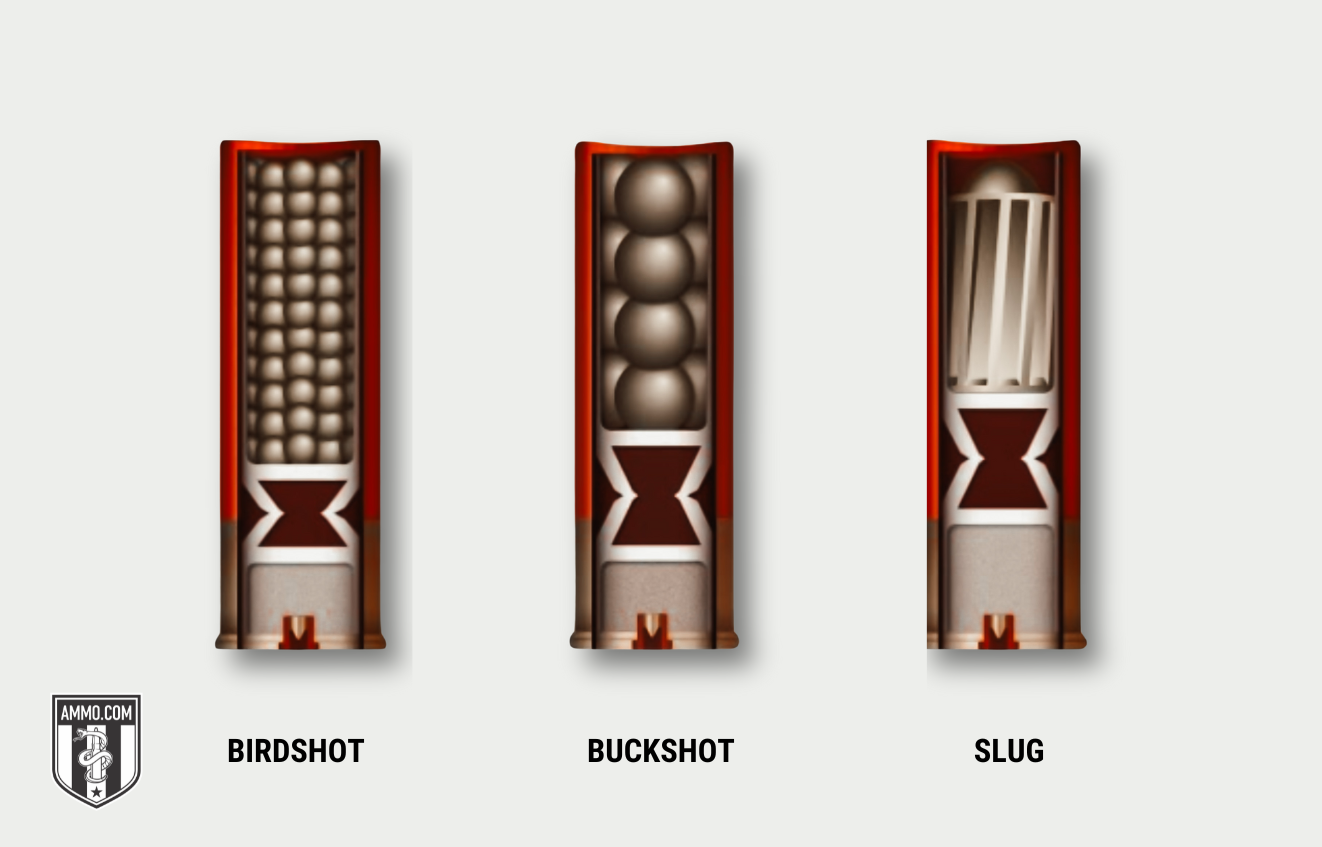
Buckshot
Buckshot sizes range from #4 (0.24”) to 0000 (0.38”) in diameter. It’s primarily used for medium game hunting and home defense. Larger buckshot packs more stopping power than birdshot, although far fewer pellets actually strike the target.
Slugs
Slugs are single shotshell projectiles (unlike birdshot and buckshot, which are numerous). Slugs perform more akin to rifle bullets, and are commonly used for medium and big game hunting, home defense, and law enforcement. Two main types of slug are available: rifled, and sabot. A rifled slug is designed for a smoothbore shotgun. A sabot slug is designed for a rifled bore shotgun.
Shotgun Shot Size Chart
Understanding shot size is critical to choosing the perfect shotshell. Shot size naming conventions can seem intuitive at first. You will likely find our shot size chart more helpful than the subsequent explanation.
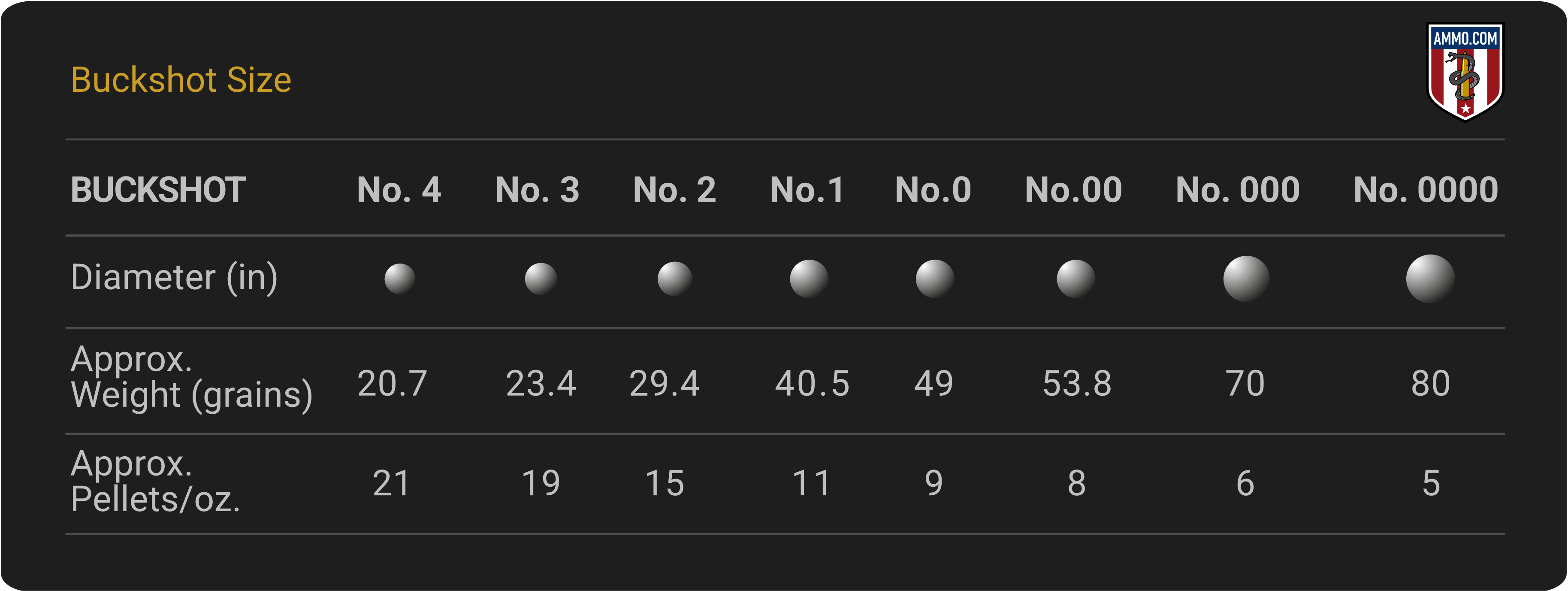
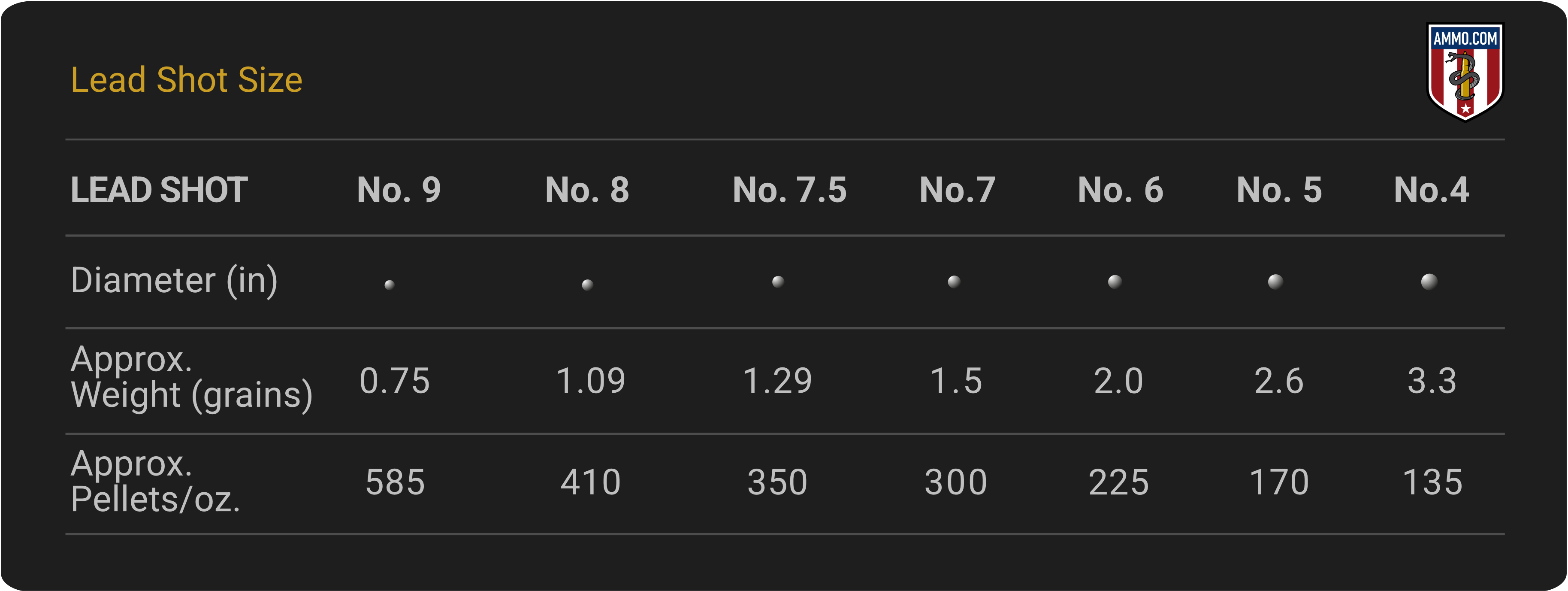
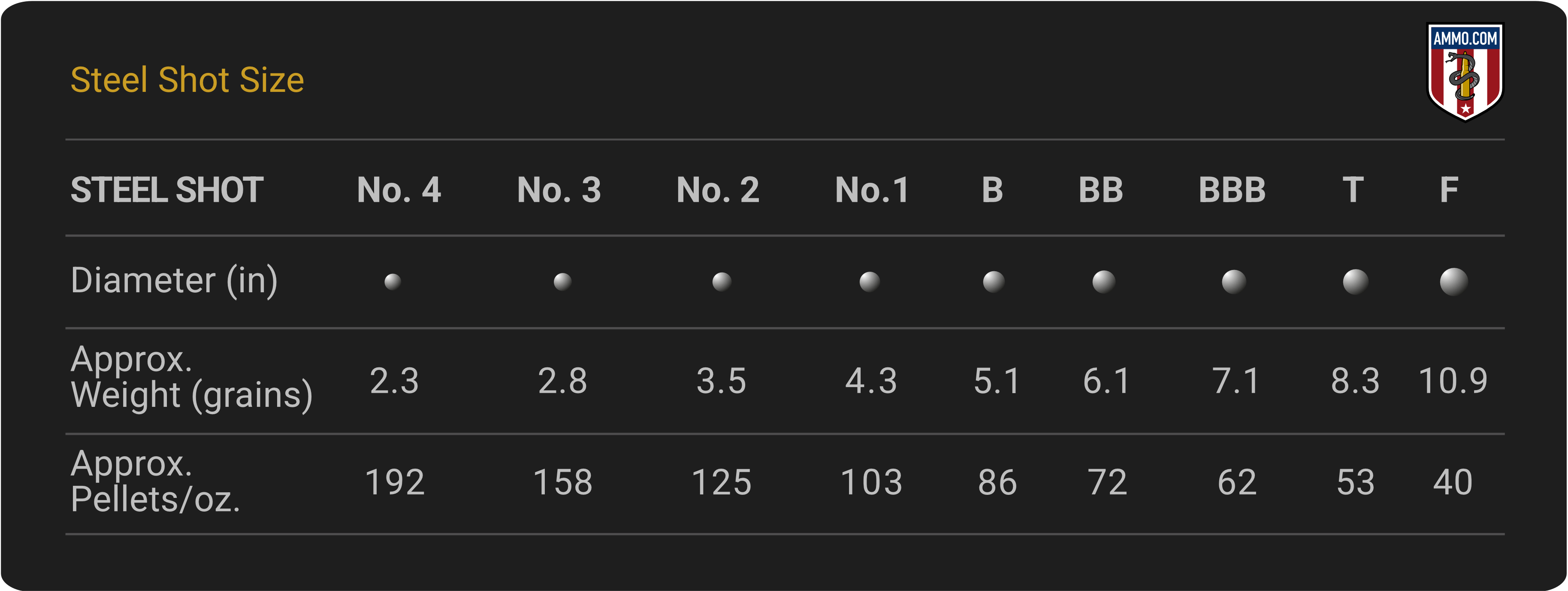
A shot pellet’s size refers to its diameter. Each number corresponds to a different diameter. Counterintuitive though it may seem, larger numbers correspond to smaller shot sizes. For example, a #9 shot pellet is 0.08” in diameter; a #8 shot pellet, 0.09”.
Buckshot follows the same convention. The smallest buckshot pellet, #4 (0.24”), also has the highest number. Once it becomes smaller than 0.30 “, buckshot is named after one or more zeroes: 0 (0.32”), 00 (0.33”), 000 (0.36”) and 0000 (0.38”).
One or more of the same letter can also refer to a shot size. Steel B (0.17”), BB (0.18”) and BBB (0.19”) shot are all commonly used for waterfowl hunting. (T, TT, F and FF shot are all extremely rare. You may never encounter them).
Shotgun Gauges Explained
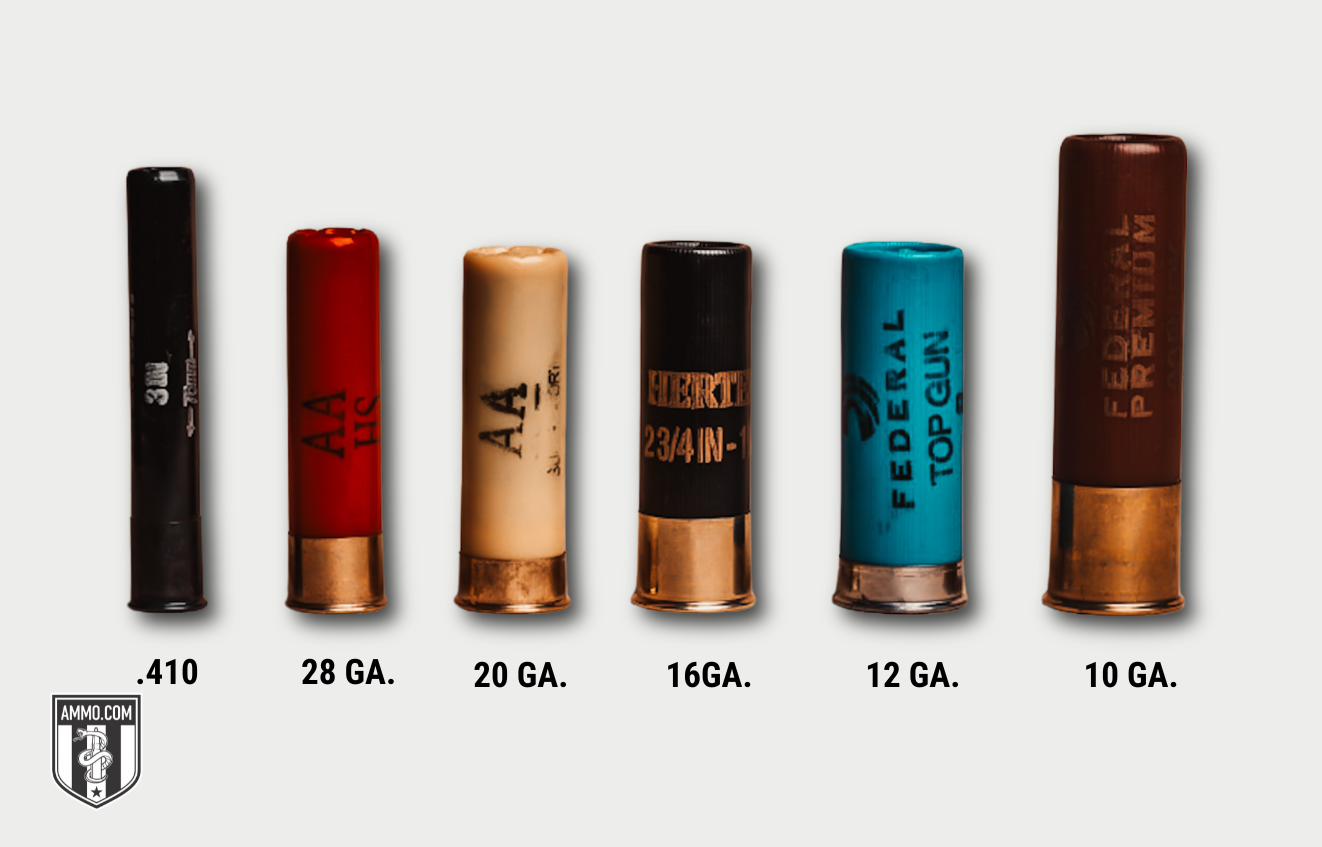
A shotgun’s “gauge” refers to the diameter of its bore. This sizing system may seem arcane at first, but it is actually simple. Imagine you have 1 pound of solid lead. You use it to create 12 equally sized lead balls. The diameter of one such ball equals the diameter of a 12 Gauge shotshell’s bore. In fewer words, a 1/X-pound lead ball shares the same diameter as an “X Gauge” shotgun’s bore.
The 9mm Flobert and .410 Bore are the only shotshells that aren’t named after gauges. Their names make their exact bore diameters more obvious (in millimeters and inches, respectively).
The most common shotshells are .410 Bore, 20 Gauge, and 12 Gauge (with 32 Gauge, 28 Gauge, 16 Gauge, and 10 Gauge ammo being rarer albeit usually available). The .410 Bore is the narrowest common shotshell. The 10 Gauge is the widest.
When it comes to shotshells, there is no intercompatibility. The .410 Bore shell is safe for .410 Bore firearms only. The same rule applies to all shotshells and shotguns. Take care, as 28 Gauge and 20 Gauge shells appear similar at first glance, but can be dangerous if mistaken for one another.
The .410 Bore and 28 Gauge are good for upland and small game hunting. When loaded with ultra-dense tungsten shot, the .410 Bore also becomes suitable for experienced turkey hunters. The 20 Gauge and 16 Gauge are often used for upland, waterfowl, and occasional deer hunting. The 12 Gauge is the most popular shotshell, and not coincidentally most versatile. It is well suited for hunting game of all sizes, as well as home defense.
Different Types of Shot Material
The first process for creating lead shot was patented in 1782. Lead remained the only type of shot until the late 1970s, when nontoxic shot types were developed to comply with conservationist laws.
Lead Shot
Lead is still the metal most commonly used for making shot pellets. It owes its continued popularity to its low cost and high density. Most target, upland hunting, and deer hunting shells are loaded with lead projectiles.
Steel Shot
Steel shot is primarily loaded in waterfowl shells, although it is also available in shells designed for clay shooting and upland hunting as well. Steel is only about 70% as dense as lead, which is why a steel shot pellet conserves less momentum (and penetrates flesh less deeply) than a lead shot pellet of the same size.
Bismuth
Bismuth is another nontoxic alternative to lead. It is denser than steel, and therefore resists wind deflection (and hits harder) than a steel pellet of the same size and traveling at the same velocity. Bismuth is also more brittle than steel, however, and is less inclined to withstand the force of ignition without breaking or otherwise deforming.
Tungsten (aka Tungsten Super Shot, or TSS)
Tungsten is the more popular alternative to steel. It is around 70% denser than lead, and around 146% denser than steel. Tungsten is substantially more expensive than any other shot material, unfortunately, and may also damage choke tubes that aren’t designed for it.
Best Shotgun Shells by Use Case
Below is a table to help you choose the best shotgun shells based on application. We matched the target species with the gauge and shot size to help you determine the best loads for target practice, upland hunting, home defense, trap shooting, duck hunting, and turkey hunting.
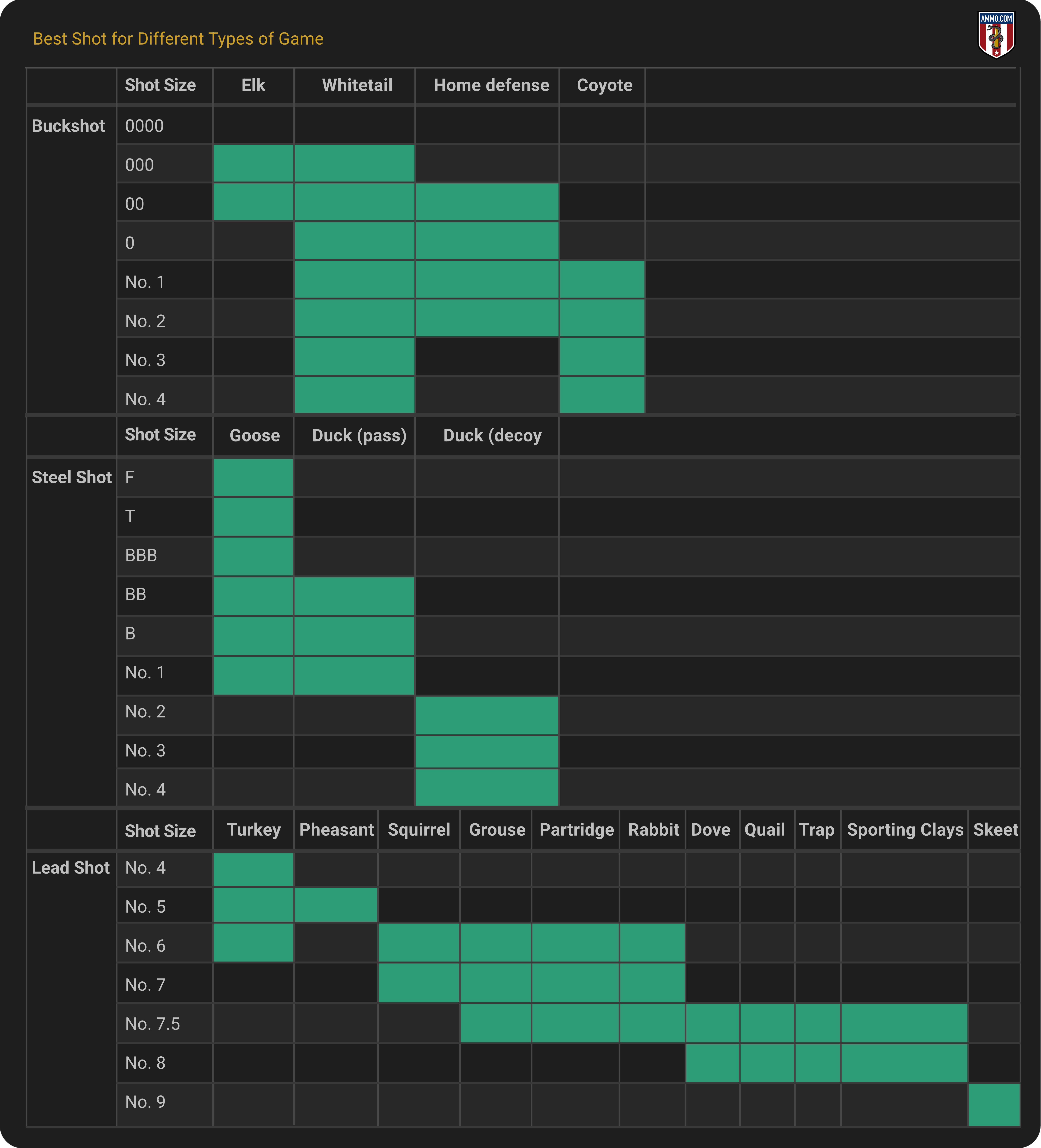
Parting Shots: Types of Shotgun Shells Explained
Congratulations! You’re now well-versed in shotgun shell types, and well on your way to becoming a shotshell Jedi Master.
As you spend more time with your shotgun, you’ll learn which shotshell types work best for specific situations and which to avoid.
Be sure to check and see which shotshells are in stock at Ammo.com, where we offer incredible customer service, great prices, lightning-quick shipping, and no Sith mind tricks.
Bullets
- A-MAX Match Ammo
- Accutip-V Ammo
- Copper Plated Hollow Point (CPHP) Ammo
- Copper Plated Round Nose (CPRN) Ammo
- eXergy (XRG) Ammo
- Expanding Full Metal Jacket (EFMJ) Ammo
- Expansion Mono Block (EMB) Ammo
- Flex Tip Technology (FTX) Ammo
- Frangible Ammo
- Full Metal Case (FMC) Ammo
- Full Metal Jacket (FMJ) Ammo
- Full Metal Jacket-Boat Tail (FMJ-BT) Ammo
- Full Metal Jacket-Flat Nose (FMJ-FN) Ammo
- Full Metal Jacket-Truncated Cone (FMJ-TC) Ammo
- Fully Encapsulated Base Ammo
- Fusion Ammo
- Hollow Soft Point (HSP) Ammo
- Hollow Point (HP) Ammo
- Hollow Point-Boat Tail (HP-BT) Ammo
- Hollow Point (HP) vs Full Metal Jacket (FMJ) Ammo
- Jacketed Hollow Point (JHP) Ammo
- Jacketed Soft Point (JSP) Ammo
- Lead Flat Nose (LFN) Ammo
- Lead Hollow Point (LHP) Ammo
- Lead Round Nose (LRN) Ammo
- Lead Round Nose-Flat Point (LRN-FP) Ammo
- Lead Semi-Wadcutter Hollow Point (LSW-HP) Ammo
- Lead Solid Ammo
- Multi-Purpose Tactical (MPT) Ammo
- Nosler Accubond Ammo
- Nosler Balistic Tip Ammo
- Nosler Partition Ammo
- Open Tip Match (OTM) Ammo
- Pointed Soft Point (PSP) Ammo
- Power Point (PP) Ammo
- Semi-Jacketed Hollow Point (SJHP) Ammo
- Semi-Jacketed Soft Point (SJSP) Ammo
- Soft Point (SP) Ammo
- Soft Point-Boat Tail (SP-BT) Ammo
- Soft Point Cutting Edge (SPCE) Ammo
- Solid Copper Hollow Point (SCHP) Ammo
- Super Shock Tip (SST) Ammo
- Tipped Triple Shock X Ammo
- Total Metal Jacket (TMJ) Ammo
- Triple Shock X (TSX) Ammo
- Trophy Bonded Tip Ammo
- Truncated Cone Hollow Point (TCHP) Ammo
- Truncated Cone Solid Bullet (TCSB) Ammo
- V-MAX Ammo
- XPB Hollow Point Ammo
- Z-MAX (Zombie Max) Ammo
- Green Tip Ammo
- Shotgun Shell Types for Clay Shooting, Home Defense, & Hunting Explained
